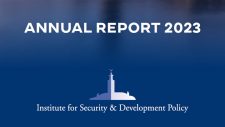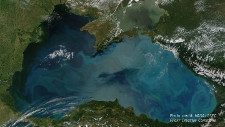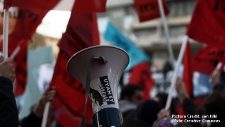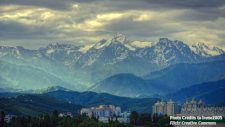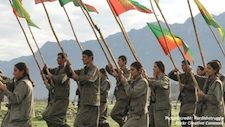Turkey’s Kurdish Conflict: 2015-Present
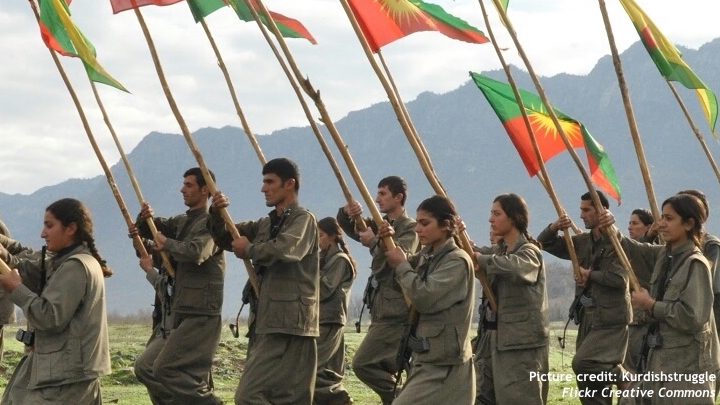
ISDP
Summary
- The Suruç bombing in July 2016 flared up Turkey’s most significant intra-state conflict.
- Since July 2015, more than 2,300 people have been killed in violent clashes.
- Western Turkish cities such as Istanbul and Ankara have been hit hard by terror attacks allegedly conducted by the PKK and its affiliates.
- The conflict feeds from the Syrian war where both belligerents are involved and fight intensely with each other.
- This ISDP Backgrounder gives an overview to the conflict, identifies actors involved, a timeline of events, the casualties of the conflict so far and identifies trends in the conflict.
Introduction to Turkey’s Kurdish conflict
Turkey’s Kurdish conflict has dominated the headlines of Europe throughout 2016. Increasingly, Turkey, has turned into an authoritarian state by suppressing critical voices and crushing an elected opposition party. The detention of high-ranking officials of the People’s Democratic Party (HDP) at the start of November 2016 attracted international attention. Over time, the political situation of Turkey’s Kurds has deteriorated into military confrontations between the Turkish central state and Kurdish nationalist groups.
Origins of the conflict
The origins of this conflict can be traced back to the fragmentation of Kurdish populations into several states at the breakup of the Ottoman Empire. The Kurdish fragmentation into the states of Turkey, Syria, Iraq, and Iran took its course after the Treaties of Sèvres and Lausanne established new boundaries between Middle Eastern states. However, despite the promises of major Colonial powers, no separate nation-state emerged for the Kurds. Kemal Atatürk’s vision of a unitary Turkish national state laid the foundation for the so-called “Kurdish question” which remains one of the most divisive political issues within Turkish politics.
The armed conflict
Throughout the decades following the proclamation of the Turkish republic, the Kurds were torn between integration, assimilation, or rejection by the Turkish republic. In spite of considerable Kurdish integration into the Turkish majority society, there remained complaints of state repression, discrimination and economic disregard of Kurdish regions. The Kurdistan Workers’ Party (PKK) emerged in the late 1970s, and turned into the most conspicuous Kurdish political interest group. In 1984, this Marxist-Leninist group embarked on a campaign of armed resistance. As a consequence, over the following fifteen years, more than 40,000 people approximately have been killed in clashes.
The “Kurdish opening”
From 2002, the governing Justice and Development Party (AKP) of Recep Tayyip Erdoğan embarked on new reform initiatives that dealt directly with the Kurdish question.1 The Turkish approach towards its Kurdish population was not solely intended to provide more minority rights, but also to achieve a gradual disarmament of PKK rebels. It is widely assumed that this “opening” to Kurds had electoral purposes, trying to embrace more Conservative voters with Kurdish-background and oppose to the views of competing national parties such as the Republican People’s Party (CHP) and the Nationalist Movement Party (MHP).2 Similarly, the re-intensification of conflict with Kurdish representatives appears also a product of domestic political calculations.
The return to weapons
The recent renewed outbreak of conflict stems from a combination of domestic and regional developments. When the Syrian Kurdish city of Kobanî came under siege by the Islamic State (IS) in September 2014, the Turkish policy of non-intervention led to unprecedented expressions of public anger and protests by Turkey’s Kurds. This could be seen as a herald for the conflict that was triggered not a year later with the Suruç bombing, which marks the turning point in recent Turkish-Kurdish relations. The terror attack of Suruç on July 20th 2015, allegedly conducted by IS terrorists, killed 34 people, most of them young Kurds. Kurdish and leftist groups in Turkey blamed the state for having secretly supported radical Islamists and for having the utmost disregard for Kurdish civilians.
Following the Suruç attack, growing mutual distrust and diverging political interests put an end to the 2013 cease-fire. Subsequently, a massive spiral of violence broke out again. Between the summer of 2015 and late November 2016, 2,360 people were killed. Large-scale military operations in the south-eastern provinces of Diyarbakır, Mardin, Şırnak, and Hakkari destroyed a considerable amount of infrastructure. Conversely, PKK terrorists have targeted places of symbolic value in Istanbul and Ankara in attacks that have killed dozens of Turkish state officials and civilians. Yet, the main fighting zones that have caused the majority of casualties are in the Kurdish regions of south-eastern Turkey.³
Actors
Turkish state forces
Turkish Armed Forces (TSK): Regular state forces with Turkish Land Forces (1), Turkish Naval Forces (2), and Turkish Air Forces (3).
Special Forces: Special operation units of the TSK, supporting combatant and non-combatant forces.
Gendarmerie Special Operations Command (JÖH): combat and intelligence services such as search, infiltration, destroy, and reconnaissance; counter-terrorism force as part of the TSK.
Gendarmerie Intelligence and Counter-Terrorism, Gendarmerie Intelligence Organization (JITEM, JIT): Special intelligence unit, entitled to conduct discrete counter-terrorist actions.
Turkish National Police (TPT): Regular police forces, underlying the command of the Ministry of the Interior, and conducting large-scale anti-PKK actions with growing competences.
Police Special Operations Department (PÖH): Special Forces for counter-terrorism and law enforcement, underlying the command of the Ministry of the Interior.
Village Guards: Group of “mercenaries”, mostly ethnic Kurds but hired and armed by the Turkish state to provide special knowledge about the Kurdish opponent, combat and non-combat services.
Grey Wolves: ultra-Nationalist organization, part of the MHP, quasi-paramilitary counter-force to left-wing and Kurdish groups, part of the so-called “Turkish deep state”.
Armed Kurdish groups
Kurdish Workers’ Party (PKK): political organization with wide military structures, main actor in the conflict and mother organization for other belligerents.
People’s Defence Forces (HPG): paramilitary group, military wing of the PKK, main PKK sub-group.
Free Women’s Unit (YJA STAR): paramilitary group, special female military wing of the PKK.
Kurdistan Free Life Party (PJAK): political and militant organization based in the Kurdish part of Iran, supporter of the PKK in Turkey.
Civil Protection Units (YPS): paramilitary group, mostly operating in conventional warfare against Turkish state forces, founded in 2015, part of the Kurdish-Syrian YPG and strongly affiliated to the PKK.
Civil Protection Units female brigade (YPS-Jin): paramilitary group, female branch of the YPS, founded in 2016.
Kurdistan Freedom Falcons (TAK): Paramilitary group with strong Separatist character, affiliated to the PKK but autonomously operating via bomb attacks, e.g.
Kurdistan Communities Union (KCK): Umbrella organization for various Kurdish-rooted political and militant organizations in the region such as the Syrian Democratic Union Party (PYD).
Timeline – (July 2015 – November 2016)
On 20 July 2015, a bombing attack in Suruç, allegedly perpetrated by the IS, kills 34 people and leaves 76 injured, most of them of Kurdish origin.
Between 21 and 23 July 2015, the PKK kills 3 Turkish policemen in the provinces of Adıyaman and Şanlıurfa in retaliation acts. This is commonly perceived as the decisive moment for the Turkish government to take action.
On 24 and 25 July 2015, the Turkish military offensive (“Operation Martyr Yalçın”) on IS terrorists and PKK-linked groups in Northern Syria and Northern Iraq respectively is carried out.
Between 27 September 2015 and 5 November 2015, Turkish Armed Forces (TSK) destroy PKK mountain force structures in the province of Hakkari with about 120 people left dead (“Hakkari-assault”).
In September 2015, numerous HDP offices all over the country, also the party’s headquarters, are attacked, destroyed, and burnt down by enraged Nationalist demonstrators. HDP election rallies experience massive disturbance.
On 10 October 2015, a suicide bomber kills 103 people and leaves more than 500 injured in the deadliest terror attack of modern Turkey, mainly hitting activists of a left-wing and pro-Kurdish peace rally. Suspicions about a possible links to Turkish intelligence arise.
On 1 November 2015, General Elections bring the ruling AKP a clear victory and weakens the pro-Kurdish HDP tremendously.
On 28 November 2015, the Kurdish lawyer and activist Tahir Elçi is murdered in Diyarbakır. After his death protests of state involvement arise, still no suspect has ever been identified.
Between November 2015 and February 2015, clashes between state forces and Kurdish militias intensify through large-scale airstrikes, troop invasion, bombing attacks via Improvised Explosive Devices (IEDs) in the Southeast, causing 466 deaths in the corresponding time period.
On 17 February 2016, the Kurdistan Freedom Falcons (TAK) kill 30 people in the capital Ankara in a car bomb attack, most of them Turkish state security staff.
On 13 March 2016, a car bomb, allegedly installed by the TAK, kills 37 people in the centre of Ankara, the second severe terror attack in the Turkish capital within four weeks.
On 14 March 2016, a Turkish military operations and police units raid and kill about 50 Kurdish militants in Northern Iraq as reaction.
On 28 March 2016, reports emerge that the Turkish government is confiscating the property of Kurdish people.
Between April and May 2016, Turkish security personnel, PKK militants, and even Kurdish-Turkish village guards are killed in larger numbers after heavy clashes.
On 20 May 2016, the Turkish Grand National Assembly lifts the immunity of almost all MPs of the pro-Kurdish HDP whilst at the same time opening litigation against them.
On 25 May 2016, the PKK’s militant youth organization the Civil Protection Unit YPS claims to have retreated from the Nusaybin district.
On 5 June 2016, the TSK announces a shift of operational strategies from urban to rural areas.
On 7 June 2016, 11 people are killed, among them 7 police men when in Istanbul a car bomb close to a police bus convoy detonates, the TAK claims responsibility the attack.
In June 2016, various Kurdish-majority cities in south-eastern Turkey are kept under curfew when PM Yıldırım and President Erdoğan announce that combat operations against PKK positions have been completed.
On 15 June 2016, a military coup by parts of the TSK is conducted but eventually fails to overthrow the AKP government and President Erdoğan. The failed coup attempt leaves up to 300 people dead. As a consequence, a strict state of emergency and martial law are imposed.
On 25 August 2016, an assassination attempt on CHP leader Kemal Kılıcdaroğlu in the province of Artvin, North-eastern Turkey, fails. Allegedly it was conducted by PKK militants.
On 25 August 2016, the so-called “Operation Euphrates Shield”, the official entry of TSK into the Syrian war, target IS-positions and in particular kills dozens of the PKK-affiliated YPG members.
End of August 2016, the conflict has reached the approximately 2000 deaths since its outbreak in July 2015.
In September 2016, the proclaimed state of emergency after the July 2016 coup attempt and the ongoing war in Syria and Iraq sustain the clashes between Ankara and Kurdish forces
In October 2016, Turkish authorities shut down more than a dozen Kurdish media outlets.
On 25 October 2016, the two elected mayors of Diyarbakır, Gültan Kışanak and Firat Anlı, are arrested for their alleged links to the PKK and replaced by a government trustee.
From 4 November 2016 on, various local and national politicians of the HDP are detained and put into prison, among them the party leaders Selahettin Demirtaş and Figen Yüksekdağ.
In November 2016, the death toll in about 15 months of conflict rose to an estimated minimum of 2360, after the confrontations intensified in the course of the latest events.
Casualties and damage
The fifteen months of continuous clashes between state security forces and Kurdish militants means that a reliable list of casualties is hard to find. Nonetheless, organizations such as the International Crisis Group (ICG) have collated casualty numbers provided by the state, Kurdish militias, and independent sources to establish as closely as possible the death toll of this conflict. By the end of November 2016, the death toll is estimated at 2,360. In total, since 1984, the conflict has caused more than 40,000 deaths; it is estimated that about 350,000 people at least have been displaced.⁴ By the end of August 2016, more than 2,000 people with suspected links to the banned PKK had been detained, and 250 were reportedly remanded in pre-trial detention.⁵ Approximately, up to 500 billion US Dollar in the last two decades have spent by Turkish governments for counter-terrorist policies⁶, while the term “counter-terrorism” remains highly debatable in the light of today’s developments.
Categorizing the Casualties
The ICG’s statistics distinguish among four different groups of victims, figure 4. This provides a more detailed picture of the suffering. The highest numbers of casualties are, not surprisingly, PKK militants, 965 of which are estimated to have been killed, followed by Turkish security force members at 808. Presumably, the rate of killed PKK fighters could be much higher. However, as is customary in civil wars, there is considerable variance in casualties reported, as both sides claim to have killed much greater numbers of enemies. While the TSK reports almost 5,000 killed PKK militants, the PKK claims to have killed about 1,500 Turkish security forces.⁷
A trend that has emerged over the conflict is in a growth in the group that the ICG identifies as, “youth of unknown affiliation”. This illustrates the urban character of the recent conflicts, as it comprises young people aged between 16 and 35 who mostly died in the curfew zones during clashes, and cannot be classified either as civilians or PKK militants. This number is approximately 219. Meanwhile, those classified as civilians are victims that lack any clear affiliation to one of the combatant groups, can be identified by name, and belong either to casualties in the Kurdish-dominated Southeast or those from bomb attacks in Western Turkey. The number of civilian casualties is estimated to be 368 as of November 2016.⁸
Casualties over Time
Figure 5 shows the overall development of the death toll from July 2015 to December 2015 whilst figure 6 shows the same development from January 2016 to October 2016. As can be seen, this number rarely drops below 100 deaths per month. In February 2016, it peaked at 228 casualties, followed by March with 210 deaths. February was also the month in which the largest number of security staff and PKK militants were killed. As the statistics show, there is no indication that the death toll is about to decline. The domestic political situation remains irreconcilable, mostly resulting from the more repressive post-coup measures such as mass detentions of Kurdish politicians and the ongoing fighting with Kurds beyond Turkish national borders.
Damage to infrastructure
Even though there has been a slight shift from urban to rural warfare from the Kurdish side has become more visible, the infrastructural damages have mostly impacted upon urban areas. The city of Şırnak along the border with Syria and Iraq was heavily affected by airstrikes. Reports show that about 70 percent of the provincial capital centre was destroyed, with similar figures for historic centres of Nusaybin, Sur, and Cizre, where considerable areas were bombed into rubble.⁹ Prime Minister Binali Yıldırım announced that governmental projects will be developed in the near future to rebuild the destroyed infrastructure in the seven most affected provinces in eastern and south-eastern Anatolia. These would include schools, factories, police offices, stadiums, and hospitals.¹⁰
War arenas
The Kurdish southeast
Over time, the conflict has partly spread from the Southeast to Turkish metropolises such as Istanbul and Ankara. This also corresponds to the ICG’s observation about a slight change of strategy within the type of warfare. However, the conflict is clearly concentrated in the Kurdish-dominated provinces of Diyarbakır, Mardin, Şırnak, and Hakkari. More than one-third of all casualties have been recorded in these very provinces, whereas the districts of Sur (province Diyarbakır), Nusaybin (Mardin), and Cizre (Şırnak) have experienced by far the highest numbers of casualties since July 2015. Cizre had the highest casualty tolls, followed by Sur and Nusaybin. Many neighboring provinces were affected, accordingly, almost all provinces in Eastern Anatolia can be included into the list.
Central and Western Turkish cities
The conflict also saw, in parallel, a rise in violence in Western Turkey from January 2016 onwards. Typically, the PKK and its sub-groups launch actions from their main bases in the Southeast, yet recent developments have clearly shown the spill over of the conflict far from the Kurdish southeast. Even though Istanbul is actually the city with the largest Kurdish population, in the past it has usually been spared from violence. This changed when the TAK struck the city in June 2016, hitting a police bus and killing eleven people. Out of 23 deaths in Istanbul, the majority were categorized either as state security forces or as civilians.¹¹ Indeed, the heavy civilian death toll is indicative of the country’s deteriorating security situation. For the Kurdish armed groups there is hardly a more symbolic place to attack than the capital, Ankara. Within a relatively short time period, the capital suffered 64 deaths, most of whom were civilians. Similar to the previously mentioned case in Istanbul, the terror attacks of February and March 2016 were presumably conducted by the TAK. The question of who is responsible for the suicide attack on a mosque in Bursa in April 2016 is not clear, despite the TAK claiming responsibility. Turkish authorities suspected both Kurdish organizations as well as the IS as possible perpetrators. The same applies to the case of a heavy bombing attack in Diyarbakır on November 3rd with nine deaths where various claimed responsibility.¹²
Warfare
Shift in warfare strategies
Observers have confirmed the tendency of Kurdish militias to withdraw gradually from urban spots to rural areas. Since the beginning of 2016, their strategy appears to have shifted to focusing on targeting security forces, and thus increasing the pressure on the government to engage. As a result, the number of casualties among security forces grew steadily from February 2016 onwards. From that point on until summer of 2016, the PKK and its militant allies shifted their tactics to more high-profile attacks by using IEDs, which tend to increase casualty rates significantly. In several bombing attacks in Istanbul and Ankara, TAK took responsibility for roadside bombs to target state representatives. Since then, both belligerent groups have upped the stakes significantly. The strategy of the Turkish state now targets Kurdish military insurgents and political proponents more harshly. Actions have been taken to decisively dismantle the Kurdish political structure, and by that, increase the capabilities to control more the rural areas PKK militants had retreated to. Accordingly, retaliation attacks against Turkish state force members have been carried out more frequently.
Warfare – the administrative level
In this conflict there is a distinction between urban and rural casualties, resulting from the divergent forms of warfare. The Turkish government has been widely criticized for using heavy-handed and disproportionate force, in particular the killing of civilians in curfew zones. Through the extensive imposition of curfews on large Kurdish-dominated areas, the Turkish government envisaged a more efficient way to push through counter-actions on militants in urban surroundings, where the risk of being targeted by Turkish artillery is high. This also had huge effects on the civil population, which subsequently suffered massively from shortages of water, food, and medical care.¹³ Despite the proclaimed curfews in the end of 2015, casualties kept rising both in urban and rural areas, also due to heavy artillery fire. After the coup attempt, the Turkish state’s curfews, martial law, and state of emergency have allowed Kurdish forces to be targeted more effectively, all in the framework of justifying the re-establishment of order.
Warfare – the political level
In addition to actual fighting, the conflict has also acquired a political character. Through a parliamentary decision in the Turkish Grand National Assembly, 50 out of 59 HDP MPs were stripped of their parliamentary immunity. The HDP’s exclusion, and the subsequent legal proceedings, have meant that the most important legal representative of Kurdish aspirations has been excluded from political participation. HDP party offices have been repeatedly attacked and looted by demonstrators; especially in the run-up to the November 2015 elections, the HDP complained about assaults on their rallies. In parallel, the state’s restrictions on Kurdish media stations multiplied and intensified following the imposition of the post-coup state of emergency. Finally, the state further escalated the political conflict when it arrested elected politicians of Kurdish origin were arrested, including leading HDP figures such as Selahettin Demirtaş, Figen Yüksekdağ, and Sırrı Süreyya Önder, one of the leading persons behind the Kurdish dialogue with Ankara.¹⁴ This reflects not only a major setback for the Kurds’ integration into the Turkish political system but at least for the time being the end of Kurdish participation in the political decision-making process by legal means.
Endnotes
1 Halil Karaveli, “Reconciling Statism with Freedom. Turkey’s Kurdish Opening”, Silk Road Paper, October 2010, http://isdp.eu/wp-content/uploads/publications/2010_karaveli_reconciling-statism-with-freedom.pdf
2 B. B. Özpek & Mutluer, O, “Turkey and the Kurdish Question: Last Exit before the Bridge”, Iran & the Caucasus 20, no. 1, May 2016, 127-141.
3, 4 International Crisis Group, “Turkey’s PKK Conflict: The Rising Toll”, 2016, http://www.crisisgroup.be/interactives/turkey/
5 Amnesty International, “Annual Report, Turkey 2015/2016”, https://www.amnesty.org/en/countries/europe-and-central-asia/turkey/report-turkey/
6 Yilmaz Ensaroğlu, “Turkey’s Kurdish Question and the Peace Process”, Insight Turkey 15, vol. 2. (2013): 7-17.
7, 8 International Crisis Group, “Turkey’s PKK Conflict: The Rising Toll”, (2016), http://www.crisisgroup.be/interactives/turkey/
9 Tom Stevenson, “Unprecedented destruction’ of Kurdish city of Cizre”, Deutsche Welle (DW), May 18, 2016, http://www.dw.com/en/unprecedented-destruction-of-kurdish-city-of-cizre/a-19265927
10 Daily Sabah, “PM Yıldırım announces projects to accelerate growth in Turkey’s east, southeast”, Daily Sabah Economy, June 21, 2016 http://www.dailysabah.com/economy/2016/06/22/pm-yildirim-announces-projects-to-accelerate-growth-turkeys-east-southeast
11 Seyhmus Cakan and Humeyra Pamuk, “Kurdish militant group says it was behind the Istanbul bombing”, Reuters, June 10, 2016, http://www.reuters.com/article/us-turkey-blast-tak-idUSKCN0YW0LL
12 Mahmut Bozarslan,”One bomb, three suspects. Who was behind the latest Diyarbakır attack?” Al Monitor, November 13, 2016, http://www.al-monitor.com/pulse/originals/2016/11/turkey-diyarbakir-bombing-who-did-it-isis-pkk.html
13 Association for Human Rights and Solidarity for the Oppressed (Mazlumder), “Cizre Investigation and Monitoring Report on Developments During the Round-Clock-Curfew Imposed on the Town between December 14, 2015 and March 2, 2016”, Association for Human Rights and Solidarity for the Oppressed (Mazlumder), March 4-6, 2016, http://www.mazlumder.org/fotograf/yayinresimleri/dokuman/MAZLUMDER_CIZRE_REPORT_20162.pdf
14 Human Rights Watch, “Turkey: Opposition Party leaders, MPs jailed. Government Widens Crackdown on Independent Media, pro-Kurdish Opposition”, November 7, 2016, https://www.hrw.org/news/2016/11/07/turkey-opposition-party-leaders-mps-jailed
Related Publications
-
ISDP Annual Report 2023
ISDP’s Annual Report for the year 2023. We look back on 2023, a year in which tensions and conflicts captured the strategic space in ISDP’s focus areas, making headlines around […]
-
A New Spring for Caspian Transit and Trade
Major recent shifts, starting with the Taliban victory in Afghanistan and Russia’s war in Ukraine have led to a resurgence of the Trans-Caspian transportation corridor. This corridor, envisioned in the […]
-
Turkey’s Opposition Can’t Win Without the Working Class
Kemal Kilicdaroglu, the leader of Turkey’s main opposition Republican People’s Party (CHP), has a realistic chance of defeating President Recep Tayyip Erdogan in the upcoming presidential election on May 14. […]
-
Promise And Peril In The Caucasus
America’s national security bureaucracy separates the Caucasus and the Middle East into different bureaus, with Central Asia in yet another office. This is part of the reason the U.S. has […]
-
Turkey’s Problem Isn’t Sweden. It’s the United States.
The issue isn’t what Sweden says or does but what the United States does or fails to do on the ground in Syria that matters for Turkey’s national security interests. […]
